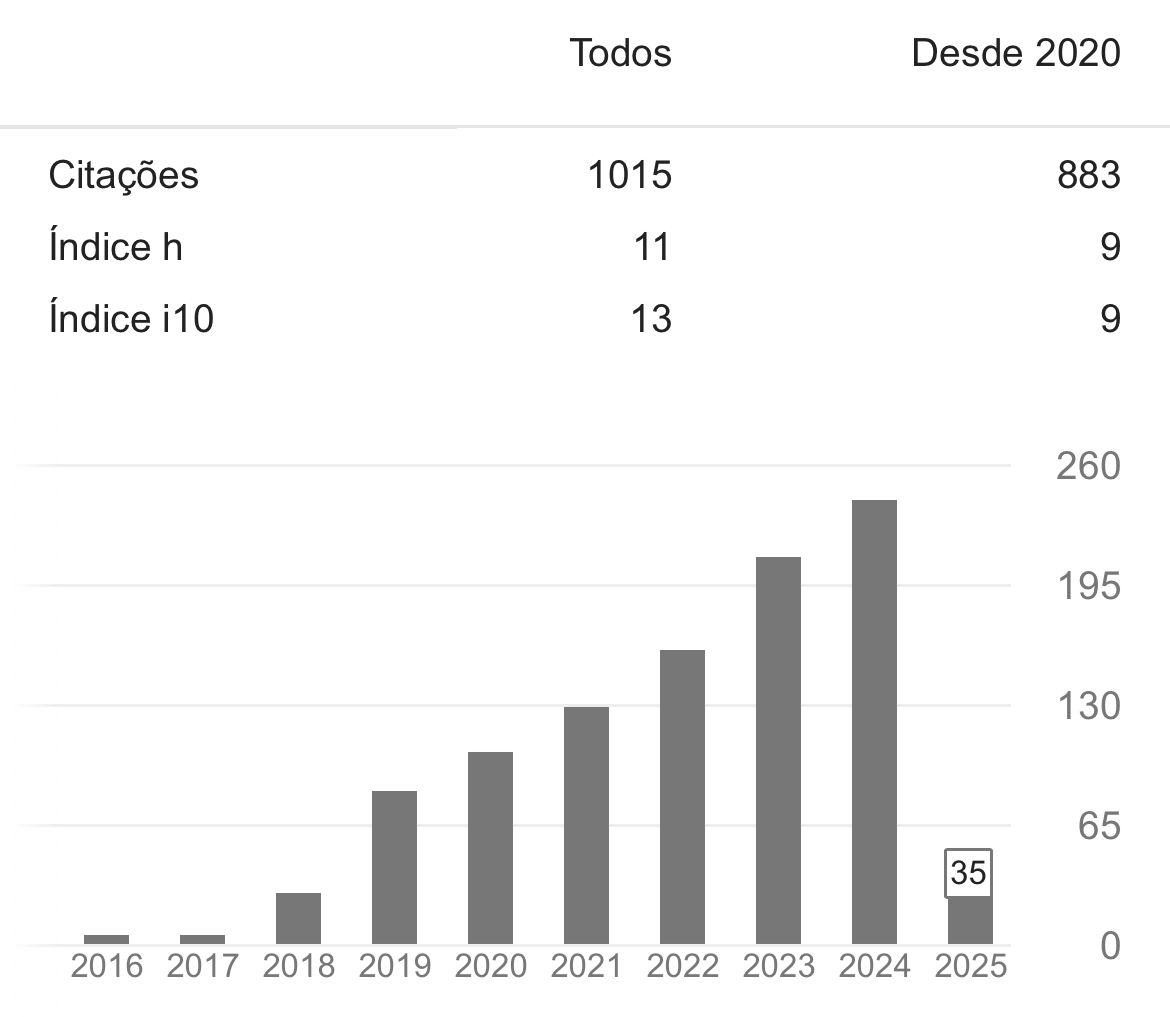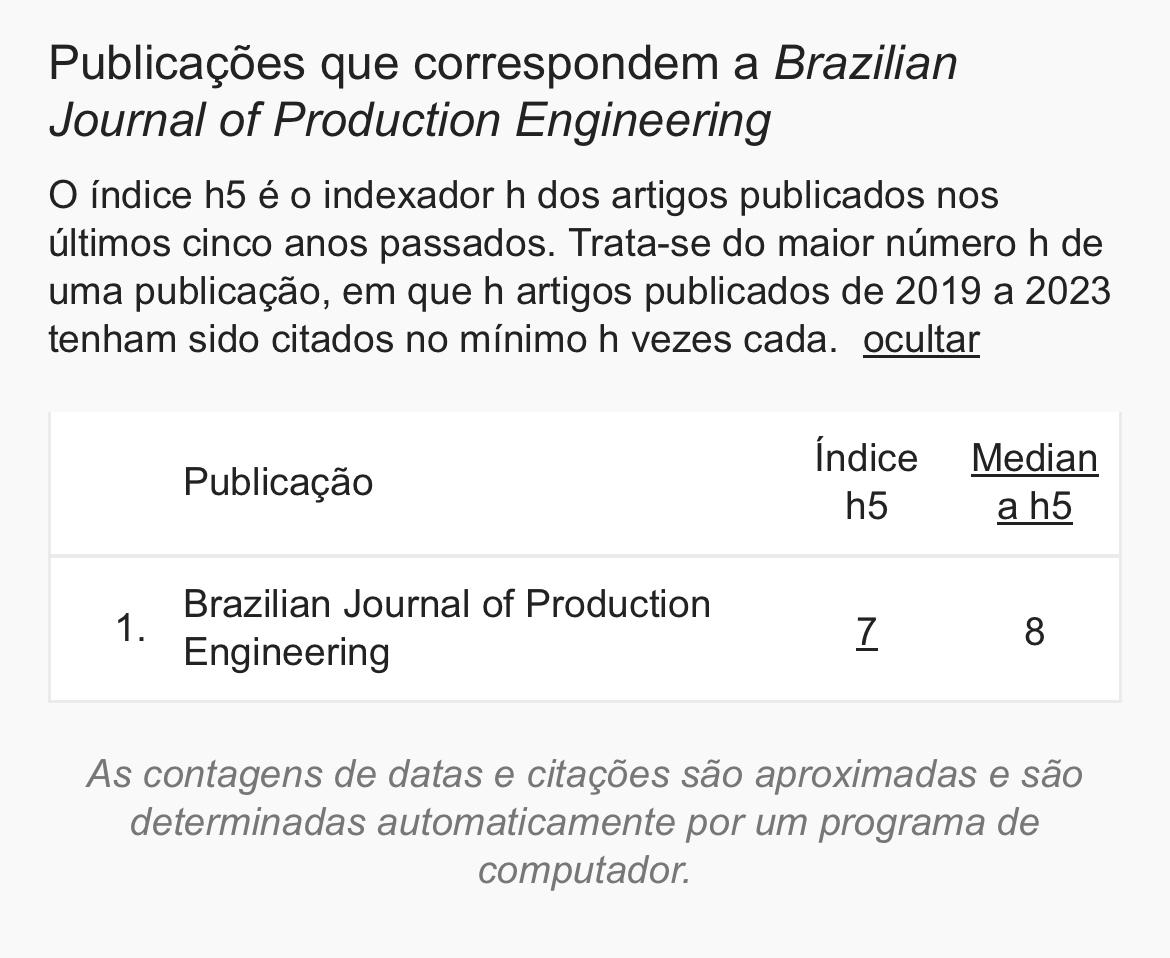Análise do nível de maturidade do processo de desenvolvimento de produtos: um estudo de caso em uma empresa calçadista
DOI:
https://doi.org/10.47456/bjpe.v8i1.37569Palavras-chave:
Processo de desenvolvimento de produtos, Modelos de maturidade, Indústria calçadistaResumo
Os padrões de competitividade da indústria calçadista nas últimas décadas têm exigido mais das empresas a capacidade de captar e responder aos sinais do mercado. Neste contexto a gestão do Processo de Desenvolvimento de Produtos (PDP) torna-se um fator estratégico. Os modelos de maturidade surgem como uma ferramenta de auxílio à gestão do PDP na busca da melhoria do processo. A presente pesquisa buscou através da realização de um estudo de caso, a análise do nível de maturidade do PDP de uma empresa de calçados localizada no Vale dos Sinos no Rio Grande do Sul, através das abordagens do Capability Maturity Model Integration, CMMI, Modelo de Capacidade e Maturidade Integrado, e do Modelo Unificado de Rozenfeld et al. (2006). Os resultados demonstram a efetividade dos modelos na identificação de oportunidades de melhorias no PDP de calçados da empresa alvo do estudo.
Downloads
Referências
Abicalçados. (2016). Relatório Anual. Recuperado de https://www.abicalcados.com.br/midia/relatorios/relatorio-anual-2016.pdf
Bardin, L. (2009). Análise de conteúdo. Lisboa: Portugal.
Baxter, M. (1996). Product Design: practical methods for the systematic development of new products. London: Chapman and Hall.
Chrissis, M. B., Konrad, M., & Shrum, S. (2003). CMMI Guidlines for process integration and product improvement. Addison-Wesley Longman Publishing Co. Inc.
Clark, K. B. & Fugimoto, T. (1991). Product Development Performance. Strategy, Organization and Management in the World Auto Industry. Boston: Harvard Business School Press.
Clark, K. B. & Whellwright, S. C. (1992). Structuring the Development Funnel. In: WHEELWRIGHT, S. C. (Ed.). Revolutionizing Product Development: Quantum Leaps in Speed, Efficiency, and Quality. New York: Free Press.
CMMI Capability Maturity Model Integration. (2002). version 1.1. Carnegie Mellon Institute. Recuperado de https://www.sei.cmu.edu/library/assets/whitepapers/cmmi-dev_1-2_portuguese.pdf
Cooper, R. G. (1993) Winning at New Products: accelerating the process from idea to launch. Reading: Addison-Wesley Publishing.
Cooper, R. G. (1996) Overhauling the new product process. Industrial Marketing Management, 25(6), 465-482.
Cooper, R. G., Edgett, S. J., & Kleinschmidt, E. J. (1999). New product portfolio management: practices and performance. Journal of product innovation management, 16(4), 333-351.
Cooper, R. G., Edgett, S. J., & Kleinschmidt, E. J. (2005). Benchmarking Best NPD Practices-3: The NPD Process & Key Idea-to-Launch Activities. Research-Technology Management, 47(6), 43-55.
Cooper, R. G. & Kleinschimidt, E. (1987). What makes a new product a winner: success factors at project level. The Journal of Product Innovation Management, 4(3), 175-189.
Correa, A. R. (2001). O complexo coureiro-calçadista brasileiro. BNDES Setorial, Rio de Janeiro, 14, 65-91.
Crilly, N., Moultrie, J., & Clarkson, P. J. (2004). Seeing things: consumer response to the visual domain in product design. Design studies, 25(6), 547-577.
Cristofari, C. A., Jr., Paula, I. C., & Fogliatto, F. S. (2010). A method for maturity measurement and ranking of improvement projects in Product Development Management. Production, 20(3), 359-377.
Crosby, P. B. (1994). Qualidade é investimento: a arte de garantir a qualidade. Rio de Janeiro: José Olympio.
Guimarães, J. C. F., de., Severo, E. A., Nodari, C. H., Olea, P. M., & Dorion, E. C. (2013). A utilização do Stage Gate no processo de desenvolvimento de novo produto em uma indústria moveleira. Anais da XII Mostra de Iniciação Científica, Pós-graduação, Pesquisa e Extensão da UCS, Caxias do Sul, RS, Brasil.
Dooley, K., Subra, A., & Anderson, J. (2001). Maturity and its impact on the new product development project performance. Research in Engineering Design 13(1), 23-29. https://doi.org/10.1007/s001630100003
Fraser, P., Moultrie, J., & Gregory, M. (2002). The use of maturity models / grids as a tool in assessing product development capability: a review. Proceedings of the IEEE International Engineering Management Conference,18-20, Cambridge, UK.
Garcia, R. C. (1996). Aglomerações setoriais ou distritos industriais: um estudo das indústrias têxtil e de calçados no Brasil (Dissertação de Mestrado). Universidade Estadual de Campinas, Campinas, SP, Brasil.
Garcia, R. C. (2001). Vantagens competitivas de empresas em aglomerações industriais: um estudo aplicado à indústria brasileira de calçados e sua inserção nas cadeias produtivas globais. (Tese de Doutorado) Instituto de Economia, Universidade Estadual de Campinas, Campinas SP, Brasil.
Gil, A. C. (2008). Métodos e técnicas de pesquisa. São Paulo: Atlas. Guia do Financiamento. Recuperado de https://www.bndes.gov.br/wps/portal/site/home/financiamento/guia/quem-pode-ser-cliente
Johann, D., Tondolo, R. R. P., & Dalla Corte, V. F. (2016). O papel da cooperativa na logística reversa de embalagens de agrotóxicos. Revista de Administração do Sul do Pará (REASP)-FESAR, 3(1), 42-52.
Jugend, D., Onoyama, M. M., Toledo, L. C., & Silva, L. S., da. (2008). Níveis de maturidade do Processo De Desenvolvimento de Produtos em empresa de bens de capital sob encomenda: Estudo De Casos. Anais do Encontro Nacional de Engenharia de Produção, 1-16, Rio de Janeiro, RJ, Brasil.
Kahn, K., Barzack, G., & Moss, R. (2006). Establishing a NPD Best practice Framework. Journal of Product Innovation Management, 23(2), 106-116. https://doi.org/10.1111/j.1540-5885.2006.00186.x
Maganha, M. R. J., Rodrigues, J. S., Jugend, D., & Leoni, J. N. (2014). Diagnóstico do nível de maturidade do processo de desenvolvimento de produtos: um estudo de caso em empresa calçadista. Gestão da Produção, Operações e Sistemas Bauru, 9(1), 57-67.
Malhotra, N. K., Rocha, I., Laudisio, M. C., Altheman, E., & Borges, F.M. (2005). Introdução à pesquisa de marketing. São Paulo: Pearson Universidades.
Quintella, H. L. M. M. & Rocha, H. M. (2007). Nível de maturidade e comparação dos PDPs de produtos automotivos. Produção, 17(1), 199-215.
Relatório setorial indústria de Calçados. Recuperado de http://www.abicalcados.com.br/midia/relatorios/relatorio-setorial-2016.pdf
Rozenfeld, H., Forcellini, F. A., Amaral, D. C., Toledo, J. T., da Silva, S. L., Alliprandini, D. H., & Scalice, R. K. (2006). Gestão de Desenvolvimento de Produtos: uma referência para a melhoria do processo. São Paulo: Saraiva.
Toledo, J. C., Silva, S. L., Alliprandini, D. H., Martins, M. F., & Ferrari, F. M. (2008). Práticas de gestão no desenvolvimento de produtos em empresas de autopeças. Produção, 18(2), 405-422.
Vergara, S. C. (2000). Métodos de Coleta de Dados No Campo. São Paulo: Atlas.
Wheelwright S. C. & Clarck, K. B. (1992). Revolutionizing product development: Quantum leaps in speed, efficiency and quality. New York: The Free Press.
Yin, R. K. (2005). Estudo de Caso: Planejamento e Métodos. São Paulo: Bookman.
Downloads
Publicado
Como Citar
Edição
Seção
Licença
Copyright (c) 2022 Brazilian Journal of Production Engineering - BJPE

Este trabalho está licenciado sob uma licença Creative Commons Attribution-NonCommercial-ShareAlike 4.0 International License.

Atribuição 4.0 internacional CC BY 4.0 Deed
Esta licença permite que outros remixem, adaptem e desenvolvam seu trabalho não comercialmente, contanto que eles creditem a você e licenciem suas novas criações sob os mesmos termos.
















































































